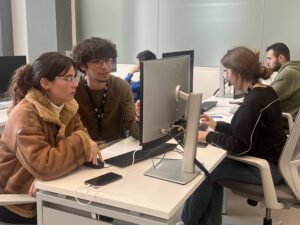The world is transforming, and technology is leading the way. For an organization to remain competitive, it needs to be agile and adapt to the continuous wave of changes. Leading this transformation is the CTO, a C-suite executive, whose role is becoming more integral than ever.
BDD spoke with Wissam Youssef (WY), CEO & Co-Founder of CME Offshore, on what leading CTOs need to do to remain competitive, how CTOs roles will change, and how to develop a strong engineering culture.
BDD: What are the characteristics of leading CTOs?
WY: CTOs generally deal with different types of stakeholders, both internal and external, including customers, other C-level executives such as the CEO and their respective technology teams. The CTOs ability to lead with these 3 different stakeholders depends on:
- Having a strategic mindset that allows him/her to understand and contribute to the strategic objectives that serve the vision of the CEO.
- Being a mentor for his/her team (leadership by example)
- Being a lifelong learner and being humble, to be able to gain the respect and trust of his/her customers especially in our high-velocity industry.”
BDD: Is it integral that CTO’s have the same autonomy as other C-Suite executives?
WY: Achieving alignment on the vision and strategic objectives across the whole company is the most optimal output of any enterprise. This is what we call ‘enterprise resonance’ at CME. CTOs are key elements to establish this alignment – it’s very healthy to have a CTO vs. CEO balance within the C-level team because the 2 mindsets are driven by different priorities (Tech vs. Revenue and performance). However, when it comes to execution, everyone (including the CTO) must be aligned with the long term strategic objectives while defining high and quick impact milestones at project levels.
BDD: How is the role of the CTO changing?
WY: Any change will be driven by two factors: speeding up the decision-making process, and better budget management. I believe the role of the CTO will be disintegrated into new roles focused on three main areas: Infrastructure (cloud, security, etc…), data (consolidation, analytics, accessibility) and tech services (IoT, mobility, integration, etc…). Today, the three roles exist in large enterprises but they all report to the CTO. I would expect that these three roles will be reporting directly to the CEO very soon.
BDD: What responsibilities does a CTO have internally and externally?
WY: Companies and products go through three different phases: Early adoption, growth, and maturity – then they get disrupted by new market players or new technologies. The main responsibility of the CTO is to ensure a smooth transition between the different phases. During the early adoption (and disruption), the main question to answer will be build vs. buy. During the growth phase: in-house vs. outsource (due to lack of resources). During the maturity phase: refactoring or not.
The role of a CTO really differs depending on the type of companies (single vs. multiple products or business lines). In a multi-industry/ multi-products enterprise, it’s crucial for the CTO to maintain common architecture practices while helping product owners to split projects into various milestones (especially the ones with high technological risk).
If we want to summarize the role of a CTO in a single sentence I would say: Leveraging the technology at the service of delivering business value and improving the enterprise (or product) competitive advantage.
BDD: Can you describe the ‘engineering culture’ that companies must adopt?
WY: Adopting a specific culture is a tough and time-consuming process. There are two main areas:
– First there should be a clear and simple definition of the cultural values. At CME we have 4 main values: Respecting diversity (industry, technology, age, gender, ethnicity, etc…), Eagerness to learn, Geeky (allow people to experiment with anything) and flat communication.
– Then, with whatever values we define, they must be integrated in:
- The enterprise structure: Filling the leadership positions by people with the right values.
- The enterprise processes: Reminding everyone of the values at every step of the process (hiring processes, development processes, customer communication, etc…)
BDD: How is CME Offshore working alongside CTO’s / teams to enhance their understanding of the tech realm?
WY: We are trying to leverage our industry and technology diversification, especially by mixing the hardware and software capabilities, which is something very unique to CME. We are also encouraging our teams to focus on domain expertise as much as the technology expertise
We put in place a unique solution developed by CME for the purpose of embracing change and answering the following questions that any company can adapt to suit them:
- Why do I work for CME? Creating a shared story behind every strategic initiative that’s linked to the team, management and executives
- How am I contributing? Executing our master plan and visualize the value creation through our entire team (one by one)
- What’s in it for me? Aligning business and career objectives while turning our performance appraisal process to be real-time with an explicit reward system that’s mapped to our accomplishments as a company.




